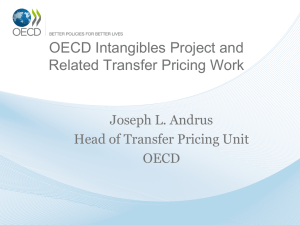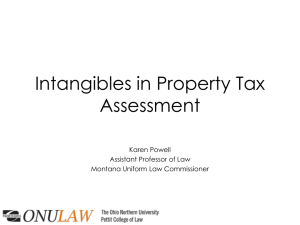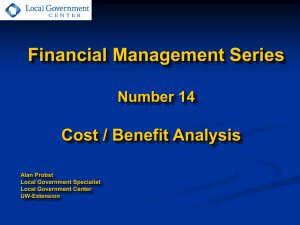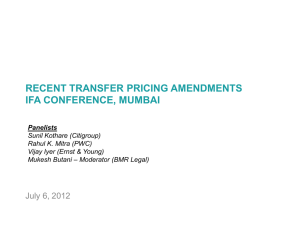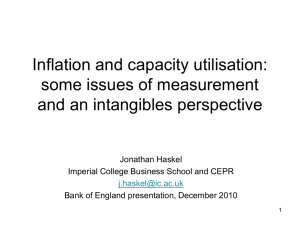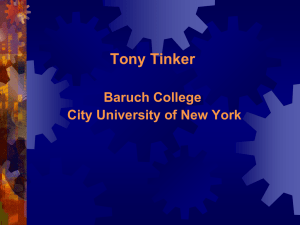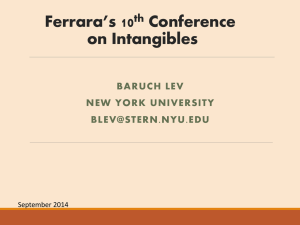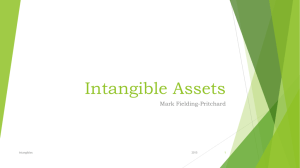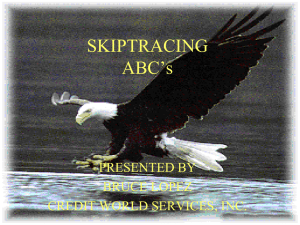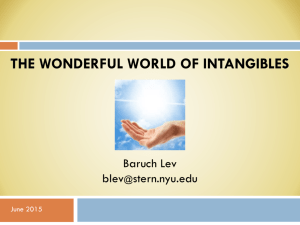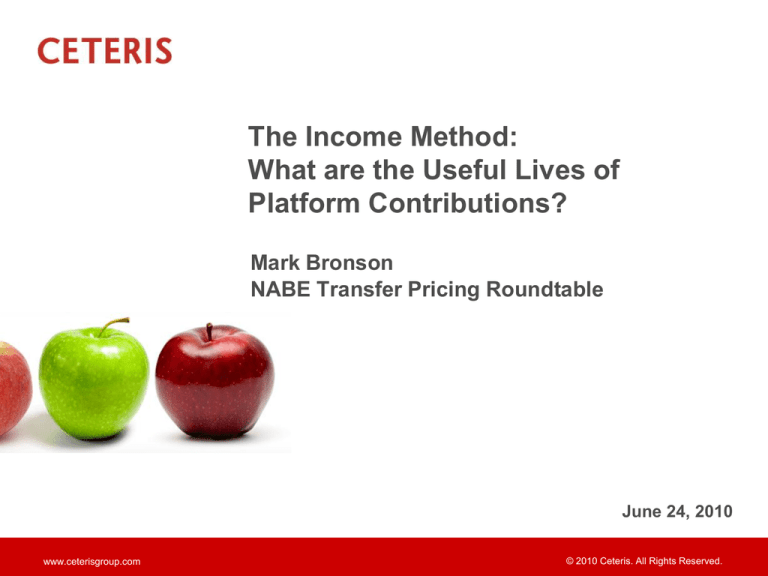
The Income Method:
What are the Useful Lives of
Platform Contributions?
Mark Bronson
NABE Transfer Pricing Roundtable
June 24, 2010
www.ceterisgroup.com
© 2010 Ceteris. All Rights Reserved.
What is Useful Life?
• Under §1.482-7(g)(2) of the “old” cost sharing regulations, participants to cost-sharing
arrangements had to make buy-in payments to owners of “pre-existing intangible property”
that was made available to them for purposes of developing new intangibles.
•Taxpayer views of what was meant by “pre-existing intangibles” often did not agree with
IRS views.
- Taxpayers often attached value to pre-existing intangibles by assigning useful lives defined by the answer to the
question “If you no longer continued to invest in intangibles, how long would your current intangible stock be
productive?”
-The IRS view seemed to be that the value of pre-existing intangibles included not only the value of intangibles as they
existed at the buy-in date, but also the value of the rights to continue to invest in those intangibles. In application, this
often took the form of income-method like valuations with high terminal values.
• New temporary cost sharing regulations put broader definition around non-routine
contributions. The concept of pre-existing intangibles has been replaced by platform
contributions. Platform contributions are defined as follows (in §1.482-7T(c)(1)) :
“Any resource, capability or right that a controlled participant has developed, maintained, or acquired externally to the
intangible development activity that is reasonably anticipated to contribute to developing cost shared intangibles.”
• Under both the pre-existing intangible and platform contribution constructions of
compensable contributions, the duration of useful life (or duration of anticipated contribution)
is central to valuation.
www.ceterisgroup.com
2
What is Useful Life?
•The importance of useful life determinations is demonstrated in Judge Foley’s opinion in the
Veritas Software US Tax Court Case, where the buy-in valuation methodology used by the
IRS’ expert was found to led to arbitrary and capricious determinations by the IRS in some
part because Foley believed that the “akin to a sale” theory employed by the expert valued
“short-lived intangibles” as if they had a perpetual life.
• Even the most expansive definition of compensable contribution needs to incorporate an
understanding that no contribution lives forever.
- Barriers to entry are not infinitely lived.
- One appropriate question to ask in framing the life question under the broadest definition
would be “Standing at the date of the valuation of the contribution, for what duration would
I expect intangible development efforts to produce returns that are in excess of
appropriate capital costs given the risk of investment?”
• At the same time, the “non-maintenance” approach often employed by taxpayers under the
old cost sharing regulations would clearly not capture the value of rights to continue to
invest. This value is clearly meant to be captured in platform contribution transaction
payments under the temporary cost sharing regulations.
do otherwise would violate the tenants of the investor model embedded in §1.4827T(g)(2)(ii) and the realistic alternatives requirement of §1.482-7T(g)(2)(iii)
- To
www.ceterisgroup.com
3
What is Useful Life?
• The income method values contributions by calculating the net present value of residual
income that a given participant expects to generate by exploiting the contribution.
•By definition, a positive terminal value under the income method embeds an assumption
that intangibles have infinite lives.
T V
ResidualProfit * (1 g)
(r - g)
• If, for TV calculations, g>0, residual profits are assumed to grow forever. If g<0, residual
profits will eventually converge to zero
Rate of Decline
-5%
-10%
-20%
-50%
Time it takes for projected RP to hit
5% of TV Year RP
60 years
30 years
15 years
6 years
•Terminal value calculations that incorporate positive growth (or even slow rates of decline)
assume intangible lives (under any definition) that stretch credibility.
www.ceterisgroup.com
4
What is Useful Life?
When valuable contributions are made at the inception of a cost sharing arrangement, the
expected profitability profile associated with exploiting those intangibles might look
something like this
Projected residual profit path under valuations with nonnegative growth rates in terminal value calculations
Residual
Profits
As expected returns to intangible development
activities converge to the risk-adjusted cost of
capital, residual profits decline
Projected residual profit path under
the “non-maintenance” framework
Time
www.ceterisgroup.com
5
Measuring Useful Life
• To some extent, useful life under the “excess returns on IDCs” framework might be
observable through profitability projections.
- Profit projections may not be made for a long enough period to observe decay in expected
profitability;
- Profit projections may also be “too rosy” in that they assume ongoing excess returns not
because of pre-existing intangibles, but because of overly optimistic expectations of returns
relative to legitimate “time zero” projections
›Are the projections coming from taxpayers incorporating the same “time zero” frame of
reference that the analyst would need to be for purposes of establishing PCT payments?
•Some points of information that may be helpful for establishing useful lives under the “excess
returns on IDCs” framework:
- Historical trend in market share: How long, on average, does it take high market share
companies to mean revert based on historical data?
- McKinsey & Companies empirical analysis shows that high ROICs tend to mean revert
over a 15 year period. Obviously, this is likely to vary across industries (see Valuation:
Measuring and Managing the Valuation of Companies).
www.ceterisgroup.com
6
Thank You
Mark Bronson
Ceteris
Direct:
+1 978 666-0327
mark.bronson@ceterisgroup.com
www.ceterisgroup.com
7

